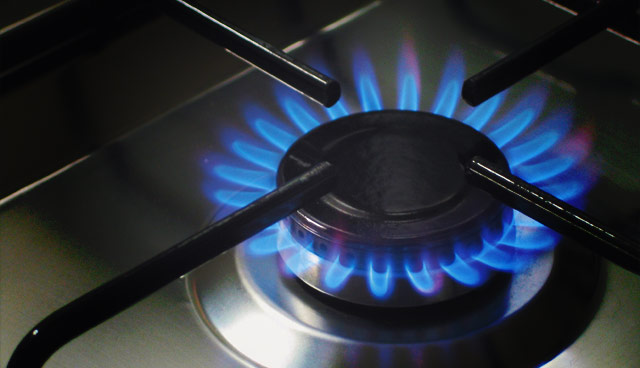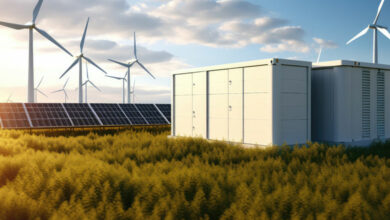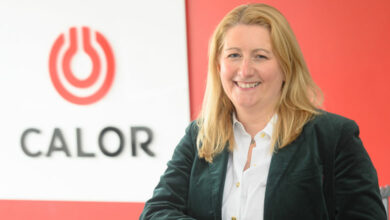Transforming heating: decarbonising gas

Northern Ireland needs to get to grips with renewable gas to provide a more secure and sustainable energy system, writes William Orbinson QC.
The Strategic Energy Framework (SEF) will be very familiar to those working in the energy sector, as will the target it set to provide 40 per cent of electricity from renewable resources by 2020. It was published in 2010 and endorsed by the Northern Ireland Executive with the aim of providing a more secure and sustainable energy system for Northern Ireland. The target seemed ambitious at the time. Despite incentives to promote renewable electricity, difficulties with planning and grid connection created a challenging environment that seemed to put the target at risk. However, with less than six months to go, the target is in sight and may even be achievable. The latest figures from the Department for the Economy show Northern Ireland produced 38.6 per cent of its electricity from renewable sources in the 12 months to March 2019.
This is all well and good for renewable electricity, but what about renewable heat? More specifically, renewable gas? This is becoming something of a hot topic in the renewables world and is something Northern Ireland needs to get to grips with if a more secure and sustainable energy system is to be provided. In 2010, domestic use was responsible for 61 per cent heat use in Northern Ireland and targeting renewable heat for domestic customers will be critical in achieving a renewable heat supply. Natural gas is a major heat source in Northern Ireland, with almost 220,000 customers connected to natural gas by the end of 2018. To date there has been an advocacy narrative surrounding gas, which is less polluting than oil or coal. The switch to gas has been seen as a positive move in reducing carbon emissions. However, natural gas is a hydrocarbon comprising mostly methane, a powerful greenhouse gas made up of carbon and hydrogen. The narrative needs to change to decarbonise the gas supply and action needs to be taken or natural gas risks being marginalised from the energy system by 2050.
The SEF set a target of 10 per cent renewable heat to be provided by 2020. However, unlike renewable electricity, it has not been possible to get corresponding figures for renewable heat generation in Northern Ireland. So, what do we know about renewable heat and gas? Well, renewable heat simply means the production of heat from renewable resources, as opposed to traditional heat sources such as oil, gas or coal. There are several ways to generate renewable heat ranging from biomass to geothermal or ground source heat pumps. The focus of this article is on renewable gas and the implications of rolling this out in Northern Ireland.
Renewable gas can be achieved through the production of biogas or hydrogen. Both are viable options for providing renewable gas, but are they viable options for Northern Ireland? Many will be familiar with anaerobic digestion, which produces biogas when organic material (usually slurry, manure, food waste or crops) is broken down in the absence of oxygen. The biogas can then be used as source of renewable gas for heating, transport or upgraded (through various processes) to biomethane which can be used interchangeably with natural gas. Biogas has recently (August 2019) been injected into the Irish Grid for the first time through a large purpose-built facility in County Kildare. An application for a second similar facility has also been submitted in County Cork. The well-developed farming industry in Northern Ireland could similarly be used to develop a biogas industry with farm and animal wastes providing the fuel source for the anaerobic digestion. However, extensive growth of energy crops may be required to produce meaningful levels of renewable gas.
There are also planning issues to consider. The planning system in Northern Ireland is not unfamiliar with anaerobic digestion, with approximately 150 planning applications (and less than 10 appeals) for anaerobic digestion or associated infrastructure being submitted since 2003. For now, any proposals for anaerobic digestion will be considered under the provisions of PPS21, PPS18 and the SPPS. PPS18 specifically sets the policy requirements for renewable energy proposals. Similar to other energy proposals, the main impacts which fail to be considered are residential amenity (noise and odour), visual impacts and environmental impacts (e.g. built and natural heritage). Other aspects may need to be considered depending on the locational and any site-specific issues. Something which also needs to be considered is the requirement for a waste management license, as separate legislation exists to control waste streams and volumes accepted at each anaerobic digestion site.
Hydrogen is also a source of renewable gas and can be produced in two main ways. One method of producing hydrogen is by using renewable electricity and is often referred to as “power to gas”. The process uses surplus renewable electricity to power the process known as electrolysis to separate water into hydrogen and oxygen. Once the hydrogen is produced it can be stored and transported or possibly connected to the grid. In terms of planning, this type of infrastructure is not referred to specifically in PPS18 but PPS18 applies to all forms of renewable energy. Visual impacts may be reduced by siting on existing wind farm sites (subject to the location on site) but this will need to be considered as part of any application. There is also potential for noise impacts from the construction and operational phases as well as ecological and archaeological impacts (depending on siting). Air Quality Assessments may be required to consider the impact of emissions. Other aspects need to be considered such as the potential for hazardous substances consent and pollution prevention and control requirements.
Due to the success of renewable electricity in Northern Ireland, specifically wind, hydrogen production from power to gas could certainly be a viable option for a switch to renewable gas. Planning permission has recently (June 2019) been granted for such a facility in Northern Ireland at Long Mountain Wind Farm. There is potential for this to be rolled out across wind farm sites all over Northern Ireland taking advantage of existing renewable infrastructure and maximising the efficiency of renewable electricity generated at these sites.
Hydrogen can also be produced from reforming methane from natural gas into its component parts – hydrogen and carbon. Onshore gas extraction has proved controversial and therefore offshore gas extraction will be needed. If hydrogen is produced close to the source of the natural gas, the carbon can be stored in depleting gas fields and existing offshore infrastructure can be used. This may be a good option for Great Britain but is unlikely to be a viable option for Northern Ireland which lacks the offshore infrastructure to facilitate it.
Northern Ireland is close to achieving the renewable electricity targets set out in the SEF and now need to consider an investment in renewable gas. It is likely that there will be a move to renewable gas throughout Europe and the UK and methane may eventually be phased out, similar to coal. Research suggests targets for the decarbonisation of gas is likely to focus on the period from 2030 – 2050 and while this may seem like a long way off decisions need to be taken sooner rather than later to plan for it. Adjustments or even replacements of the gas network may be required to facilitate a transition to hydrogen as a supply of renewable gas. Whilst there are clear and potentially viable options for large-scale production of renewable gas in Northern Ireland production is only one aspect. The network needs to be able to receive renewable gas if decarbonisation of gas is to be successful. There needs to be a government framework in place to encourage, and indeed incentivise, the production of renewable gas. For now, any proposed developments for renewable gas will be controlled through existing planning policy and specifically PPS18. Having spent 10 years advising clients on wind energy applications, appeals and judicial reviews, I am more than familiar with renewable energy policy. The transition to natural gas presents opportunities to maximise the efficiency of existing wind farm sites and create larger scale anaerobic digestion facilities. I look forward to this new era and the challenges it presents.
This article is written for general information purposes only and without responsibility.
Legal Associate of the Royal Town Planning Institute and holder of the RTPI/Law Society Joint Planning Examination
NI Associate of PEBA: the Specialist Bar Association for Planning, Environment and Local Government
Affiliate of the Irish Planning Institute
William Orbinson QC
Bar Library, 91 Chichester Street Belfast, BT1 3JQ
M: 078 6024 5324
T: 028 9042 6751
E: williamorbinson@planning.demon.co.uk
W: www.williamorbinson.co.uk






